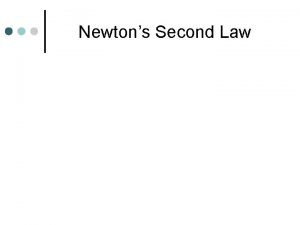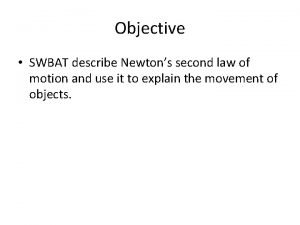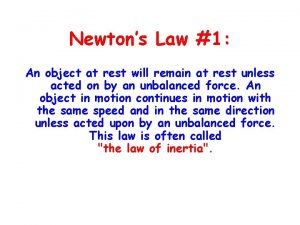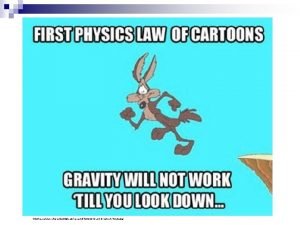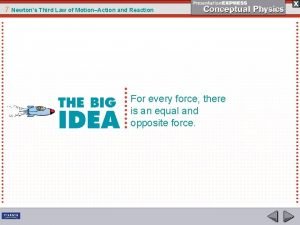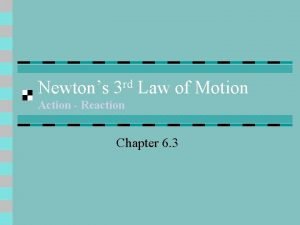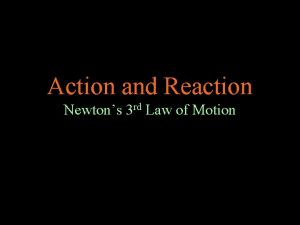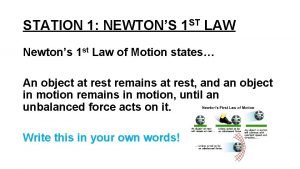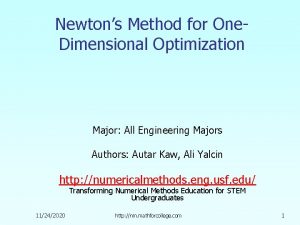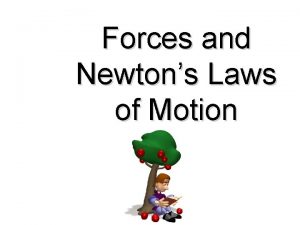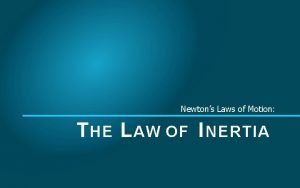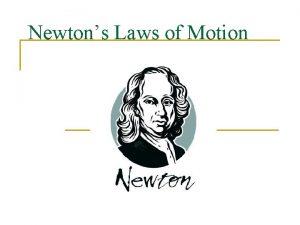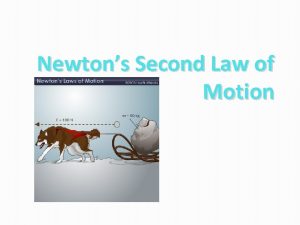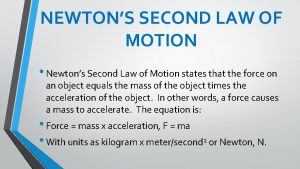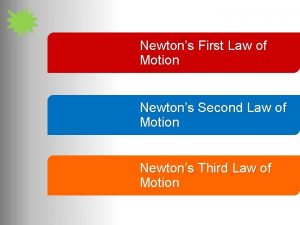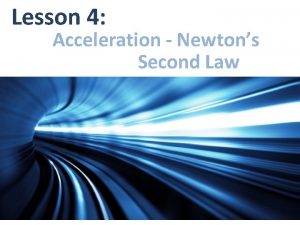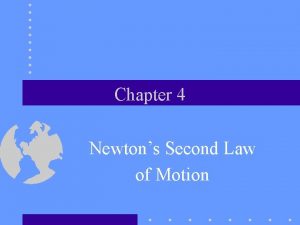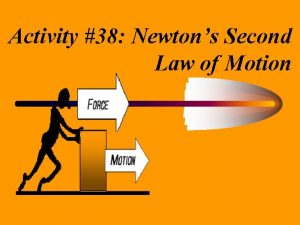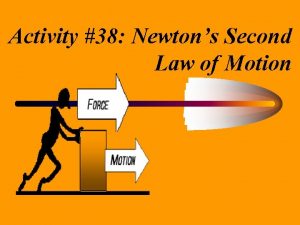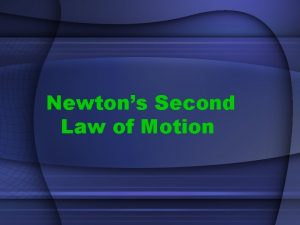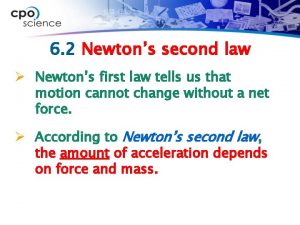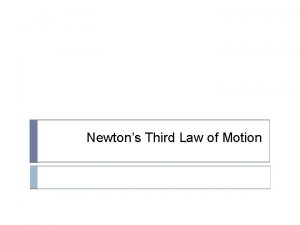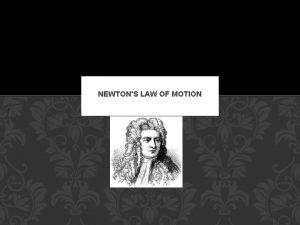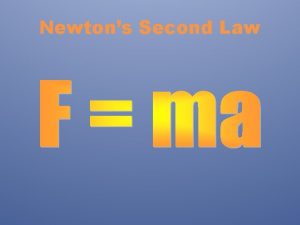ACCELERATE D MOTION NEWTONS SECOND LAW OF MOTION


























- Slides: 26

ACCELERATE D MOTION

NEWTON’S SECOND LAW OF MOTION • States the relationship between: – mass – force – acceleration

A net force acting on an object; • causes the object to accelerate • in the same direction of the force

The amount of acceleration is determined by 2 things!

1. ) the size of the force • larger force causes greater acceleration – (force is directly proportional to acceleration)

2. ) the mass of the object • larger mass results in less acceleration – (mass is inversely proportional to acceleration)

NEWTON’S 2 nd law Equation • force = mass x acceleration F = ma

UNITS of FORCE

Mass • is measured in kilograms (kg)

Acceleration • is measured in meters per second per 2 second (m/s )

Force • is measured in Newtons (N)

Knowing that…. . • force = mass x acceleration *THEN* • 1 Newton must equal 1 kg • m/s 2

If you drop a bowling ball and a marble from a bridge at the same time which will hit the ground first?

The bowling ball and the marble will hit the ground; • at the same time • Why?

Even though the bowling ball has more mass than the marble, • it also has more inertia (resistance to a force)

Acceleration caused by Earth’s gravity. 2 (g) = 9. 8 m/s

Objects that are pushed or thrown downward • are accelerated by two forces: 1. ) the force of gravity 2. ) the force of the “push or throw”

Objects that are pushed or thrown downward • have an acceleration greater than 9. 8 m/s 2

Since Freely Falling objects dropped at the same time should reach the ground at the same time…. .

Why does a penny dropped at the same time as a feather, land on the ground first?

Air Resistance: • force that air exerts on all moving objects • goes against an object’s motion car’s motion air resistance

As gravity pulls an object down; • Air resistance pushes up

Air Resistance depends upon 3 things. 1. ) velocity 2. ) shape 3. ) density

The longer an object is allowed to fall; • the air resistance increases upward

Terminal Velocity • Highest velocity that will be reached by a falling object

 Newton's second law
Newton's second law Newton's 2nd law simple definition
Newton's 2nd law simple definition Physics
Physics Describe newtons second law
Describe newtons second law Newtons second law
Newtons second law Newtons second law example
Newtons second law example Newton's first law and second law and third law
Newton's first law and second law and third law Newton's first law of motion
Newton's first law of motion Newtons 3 rd law of motion
Newtons 3 rd law of motion Newtons 3 rd law of motion
Newtons 3 rd law of motion Newtons third law of motion
Newtons third law of motion Rd law
Rd law Newton's first law of motion meme
Newton's first law of motion meme Newtons third law
Newtons third law Newton's 3 laws of motion
Newton's 3 laws of motion Newtons 3 rd law of motion
Newtons 3 rd law of motion What are newton's 3 laws
What are newton's 3 laws Newtons 3 rd law of motion
Newtons 3 rd law of motion Station +1
Station +1 Newtons law of motion
Newtons law of motion Newtons second kaw
Newtons second kaw Newtons second kaw
Newtons second kaw Newtons second laq
Newtons second laq What are newton's 3 laws
What are newton's 3 laws Normal force
Normal force Newtons first aw
Newtons first aw Newton's first law
Newton's first law

